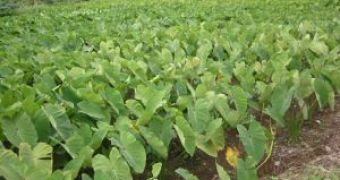Usually dry, arid zones are more "friendly" in preserving archaeological remains, whereas wet tropical regions typically are not as the humidity and heat determines an infernal speed of the bacterial activities that bring down every organic stuff, especially food items.
But a new technique - called starch grain analysis - enables the researchers to isolate and investigate residue from microcrevices in both ground stone and flaked stone tools and to detect and identify species of the preserved starch grains under a microscope.
The starch grain analysis made by Dr. Ruth Dickau, an archaeologist at the University of Calgary revealed a surprise: ancient indigenous people of the Panama area were processing and eating cultivated species of plants like maize, manioc, and arrowroot (photo) at least as far as 7,800 years ago, much earlier than scientists had believed.
This is the most vivid issue in archaeology: when did ancient people pass from the Mezolithic, when they were still in the stage of hunters-gatherers to their own production of aliments through agriculture.
Dickau recovered microscopic residues directly off the stone tools used by ancient Indians in Panama 3,000 to 7,800 years ago. "These results add to the growing evidence that the earliest beginnings of farming were not centered in arid highland regions like central Mexico and the Peruvian Andes as once believed, but in the lowland areas and humid forests of the American tropics," Dickau says.
"What is particularly interesting is that these crops were originally domesticated outside of Panama; maize was domesticated in Mexico, and manioc and arrowroot in South America. Panama, as a relatively narrow land-bridge between the two American continents, was an important route for the human spread of food crops, and clearly a region where agriculture was practiced very early in history."
"The ability of starch grain analysis to identify plant taxa in the unfavourable preservation environments of western and central Panama confirms the importance of this method for establishing the presence of particular plant species, both domesticated and wild, in the subsistence practices of early inhabitants of tropical forests," she added.

 14 DAY TRIAL //
14 DAY TRIAL //